An SFX PSU with 1100W max power. This will be fun, I said to myself. Some years ago, SFX units couldn’t go above 550W and now CM has an even stronger SFX unit than this one, with 1300W max power! Till I get to that, read the V1100 SFX Platinum’s review, since 1100W are enough even for a mightly RTX 4090 and a potent processor.
SFX units with 1100W and 1300W maximum power! This is crazy, especially if you consider that they can deliver 200% of their capacity for a short period to meet the crazy-tough ATX v3.0 spec requirements. I will start with the V1100 SFX, and if it impresses me enough, I will continue with the V1300 SFX model. I try not to push my luck too much because recently, we have had a significant failure in the lab. A PSU from a good brand destroyed one of our new and super-expensive AC sources. The PSU failed; its primary side short-circuited without the main fuse exploding, so it asked for way too high current, which killed the AC source. The latter has over power protection, which, as it seems, wasn’t fast enough to provide protection. The main fuse of the connected power analyzer also blew, and this one was rated at 20A. This means that the PSU’s failed circuit asked for more than 4600W!
The PSU has compact dimensions since it follows the SFX form factor, but Cooler Master cheated a bit since the modular sockets stick out from the chassis, looking weird. There isn’t enough space inside the PSU case for the modular sockets, so the manufacturer had to install them differently to save space. Another interesting feature of this PSU is the existence of fan failure protection. If you remove the fan, the PSU won’t start. The protection will kick in again if you try to stop it from spinning during the PSU’s start-up phase. It is great to see such a high-power-density PSU with well-implemented fan failure protection.
- Manufacturer (OEM): Sysgration
- Max Power: 1100W
- Cybenetics Efficiency: [115V] Platinum (89-91%)
- 80 Plus Efficiency: Platinum
- Noise: Cybenetics A- (25 – 30 dBA)
- Compliance: ATX v3.0, SFX12V 4.0
- Alternative Low Power Mode support: Yes
- Power 12V: 1099.2W
- Power 5V + 3.3v: 120W
- Power 5VSB: 15W
- Cooling: 92mm Fluid Dynamic Bearing Fan (HA9215SH12FD-F00)
- Semi-Passive Operation: No
- Fan Failure Protection: Yes
- Modular Design: Yes (Fully)
- High Power Connectors: 2x EPS (2x cables), 3x PCIe 6+2 pin (3x cables), 1x 12VHPWR (600W)
- Peripheral Connectors: 8x SATA (2x cables), 4x 4-pin Molex (single cable)
- ATX/EPS Cable Length: 300/450mm
- Distance between SATA connectors: 100/150mm
- Distance between 4-pin Molex connectors: 100/120mm
- In-cable capacitors: Yes (ATX, EPS, PCIe)
- Dimensions (W x H x D): 125 mm x 65 mm x 100 mm
- Weight: 1.04 kg (2.29 lb)
- Warranty: 10 years
Box & Bundle
The box features an appealing graphic design. At the front, there is a mention of the 12VHPWR (PCIe 5.0) connector, which is set at 600W max power output. Around the back, you will find more details about the PSU’s design. Inside the box, the protection is good, with packing foam surrounding the product. The bundle is also rich, including an SFX to ATX bracket, Velcro straps and zip ties, and a bunch of screws. Lastly, there is a pouch for storing the modular cables.
Product Photos
There is no power switch, which is a significant con in my book. The modular sockets also catch the eye because they go way beyond the chassis! This is cheating, CM! Normally I should measure the PSU’s depth up to the point where the modular sockets end.
Cables
| Modular Cables | ||||
| Description | Cable Count | Connector Count (Total) | Gauge | In Cable Capacitors |
|---|---|---|---|---|
| ATX connector 20+4 pin (300mm) | 1 | 1 | 18AWG | No |
| 8-pin EPS12V (450mm) | 1 | 1 | 16AWG | No |
| 4+4 pin EPS12V (450mm) | 1 | 1 | 16AWG | No |
| 6+2 pin PCIe (400mm) | 3 | 3 | 16-18AWG | No |
| 12+4 pin PCIe (400mm) (600W) | 1 | 1 | 16-28AWG | No |
| SATA (100mm+150mm+150mm+150mm) | 2 | 8 | 18AWG | No |
| 4-pin Molex (100mm+120mm+120mm+120mm) | 1 | 4 | 18AWG | No |
| AC Power Cord (1360mm) – C13 coupler | 1 | 1 | 18AWG | – |
There are a lot of cables and connectors since this is a powerful SFX PSU. Besides the 12VHPWR connector, you also get three 6+2 pin PCIe on dedicated cables for older generation GPUs or the current AMD ones. Thankfully there are no in-cable caps, and the high-current cables use thicker gauges for lower voltage drops.
Protection Features
|
OCP (Cold @ 23°C) |
12V: 108.2A (118.12%), 12.020V |
|
OCP (Hot @ 40°C) |
12V: 104A (113.54%), 12.019V |
|
OPP (Cold @ 27°C) |
1300.87W (118.26%) |
|
OPP (Hot @ 45°C) |
1275.17W (115.92%) |
|
OTP |
✓ (176°C @ secondary side) |
|
SCP |
12V to Earth: ✓ |
|
PWR_OK |
Accurate but lower than 16ms |
|
NLO |
✓ |
|
SIP |
Surge: MOV |
OCP on all rails and OPP are correctly set. This is always good to see. One downside is that the power ok signal’s hold-up time cannot reach 16ms, as the ATX spec dictates. Another downside is the lack of SCP on the -12V rail, but who needs this obsolete rail nowadays? The PSU didn’t shut down every time I shorted the -12V rail, but it didn’t break too!
Part Analysis
| General Data | |
| Manufacturer (ODM) | Sysgration |
| PCB Type | Double-Sided |
| Primary Side | |
| Transient Filter | 4x Y caps, 3x X caps, 2x CM chokes, 1x DM choke, 1x MOV |
| Inrush Protection | NTC Thermistor & Relay |
| Bridge Rectifier(s) |
1x Vishay GBUE2560 (600V, 25A @ 140°C)
|
| APFC MOSFETs |
no info
|
| APFC Boost Diode |
no info
|
| Bulk Cap(s) |
1x TDK EPCOS (450V, 800uF, 2,000h @ 105°C, B43647)
|
| Main Switchers |
4x Infineon IPL60R095CFD7 (600V, 16A @ 100°C, Rds(on): 0.095Ohm)
|
| Driver ICs | 2x Infineon 2ED21814S06FJ |
| APFC Controller | Champion CU6510VC |
| Resonant Controller | Infineon ICE2HS01G |
| Topology |
Primary side: APFC, Full-Bridge & LLC converter
Secondary side: Synchronous Rectification & DC-DC converters |
| Secondary Side | |
| +12V MOSFETs | 10x Infineon BSC007N04LS6 (40V, 269A @ 100°C, Rds(on): 0.7mOhm) |
| 5V & 3.3V | DC-DC Converters: 6x Infineon BSC0901NS (30V, 94A @ 100°C, Rds(on): 2.4mOhm) PWM Controller(s): 2x ON Semiconductor NCP1589A |
| Driver IC | Infineon 2EDN7524AF |
| Digital Isolator | Novosense NSi824x |
| Filtering Capacitors | Electrolytic: 3x Rubycon (4-10,000h @ 105°C, YXJ) Polymer: 10x United Chemi-Con, 1x NIC, 4x Unicon |
| Supervisor IC | Weltrend WT7502R (OVP, UVP, SCP, PG) |
| Fan Controller | APW9010 |
| Fan Model | Hong Hua HA9215SH12FD-F00 (92mm, 12V, 0.46A, Fluid Dynamic Bearing Fan) |
| 5VSB Circuit | |
| Rectifier |
1x Infineon BSC0702LS FET (60V, 84A @ 100°C, Rds(on): 2.7mOhm)
|
| Standby PWM Controller | Power Integrations INN3165C |
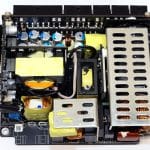
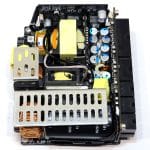

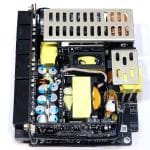
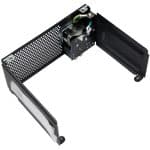


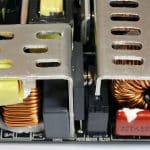
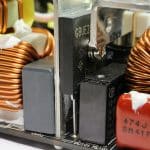
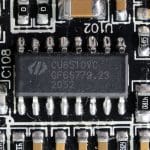
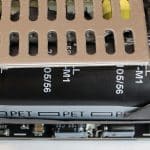
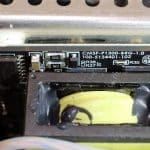

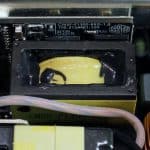
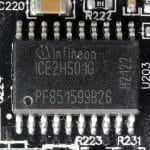
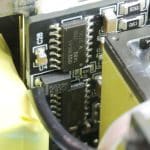
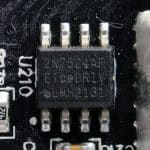
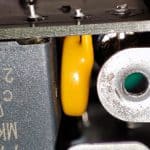
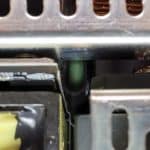
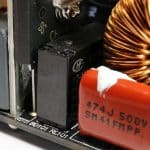
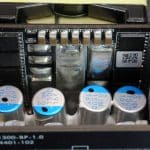
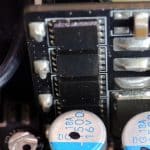
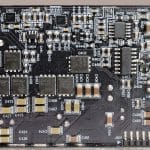
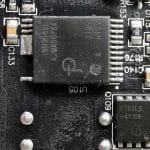
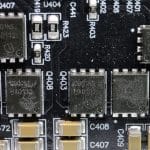
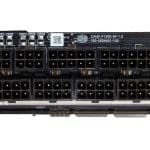
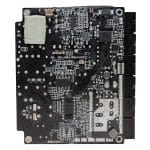
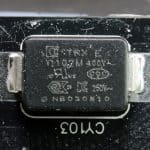
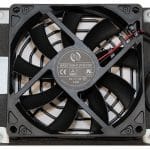
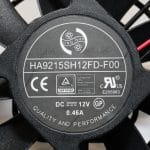

This is not among the known OEMs, but the design looks good! The heatsinks are large to help dissipate heat, and the main transformer is small, thanks to its unique design. Overall the build quality is high. The OEM used top-notch parts, including Infineon FETs and Japanese caps, by TDK, Rubycon, and Chemi-Con. The cooling fan is by Hong Hua, which looks to dominate the PSU market. On the primary side, we find a full-bridge topology able to handle the unit’s full power without any dramatic effects. An LLC resonant converter is also used to boost efficiency. On the secondary side, the typical recipe is synchronous rectification for 12V and a pair of DC-DC converters for the minor rails.
Load Regulation
Load regulation is tight at 12V, where it matters the most. It should be within 1% on the minor rails, and I don’t have a complaint from 5VSB, where the PSU topped the charts.
Ripple Suppression
| Test | 12V | 5V | 3.3V | 5VSB | Pass/Fail |
| 10% Load | 25.9 mV | 6.1 mV | 7.4 mV | 10.6 mV | Pass |
| 20% Load | 19.1 mV | 7.7 mV | 8.5 mV | 12.9 mV | Pass |
| 30% Load | 25.2 mV | 8.6 mV | 8.6 mV | 15.0 mV | Pass |
| 40% Load | 30.7 mV | 9.7 mV | 9.1 mV | 14.4 mV | Pass |
| 50% Load | 37.2 mV | 11.7 mV | 10.9 mV | 16.9 mV | Pass |
| 60% Load | 43.8 mV | 13.3 mV | 11.6 mV | 18.0 mV | Pass |
| 70% Load | 45.9 mV | 14.5 mV | 13.8 mV | 20.8 mV | Pass |
| 80% Load | 44.8 mV | 17.4 mV | 15.7 mV | 18.3 mV | Pass |
| 90% Load | 61.0 mV | 19.9 mV | 14.7 mV | 19.1 mV | Pass |
| 100% Load | 82.9 mV | 23.8 mV | 15.5 mV | 21.9 mV | Pass |
| 110% Load | 89.7 mV | 26.5 mV | 14.9 mV | 24.4 mV | Pass |
| Crossload 1 | 25.6 mV | 10.9 mV | 15.6 mV | 8.3 mV | Pass |
| Crossload 2 | 22.1 mV | 7.0 mV | 14.1 mV | 6.7 mV | Pass |
| Crossload 3 | 14.4 mV | 10.3 mV | 9.0 mV | 6.8 mV | Pass |
| Crossload 4 | 80.1 mV | 18.6 mV | 8.6 mV | 12.1 mV | Pass |
I didn’t expect low ripple at 12V in a 1100W SFX unit with limited space for filtering caps. CM should probably consider using in-cable caps, although these would make the cables (much) less flexible. The ripple readings on the other rails are low enough.
Transient Response
20% Load – 20ms
| Voltage | Before | After | Change | Pass/Fail |
| 12V | 12.077V | 11.925V | 1.25% | Pass |
| 5V | 5.032V | 4.645V | 7.69% | Fail |
| 3.3V | 3.367V | 3.233V | 3.97% | Pass |
| 5VSB | 5.120V | 5.087V | 0.65% | Pass |
50% Load -20ms
| Voltage | Before | After | Change | Pass/Fail |
| 12V | 12.056V | 11.905V | 1.25% | Pass |
| 5V | 5.004V | 4.616V | 7.75% | Fail |
| 3.3V | 3.347V | 3.210V | 4.09% | Pass |
| 5VSB | 5.109V | 5.081V | 0.55% | Pass |
The transient response is good enough at 12V, but I expected better results. On the contrary, the 5V rail failed in both tests. This could be a problem with my sample because usually, the 5V rail performs better, while the 3.3V rail is the one registering the worse performance. In this PSU, the 3.3V rail passed both tests successfully. I will test a second sample shortly to find out if I had a bad sample or if this is a generic issue.
Transient Response ATX 3.0 & 12VHPWR Connector Tests
The PSU passes all ATX v3.0 tests with success. For those of you wondering how it can fail at 5V in the normal transient tests, but there is no problem with these. This is because Intel’s test plan doesn’t allow for any transient load on the minor rails, so whatever drop they have, is because of the transient load at 12V, through which the minor rails are generated.
Hold Up Time
The hold-up time doesn’t reach 17ms. But it is decent. Most high-capacity SFX units cannot reach the desired hold-up time required by the ATX spec because there is no space in their small PCBs for large enough bulk caps.
Timings
The PSU supports Alternative Low Power Modes.
Inrush Current
Inrush currents are low with both voltage inputs.
Efficiency Normal, Light & Super-Light Loads
Under normal loads, efficiency is high with 115V and notably higher with 230V, where energy losses are lower. With light loads, efficiency gets a hit because of the PSU’s increased power.
Average Efficiency 5VSB
The 5VSB rail is highly efficient.
Vampire Power
Vampire power is low with 115V but increased with 230V input.
Average Efficiency
The average efficiency is satisfactory with 115V input and sky-high with 230V. This platform prefers high-voltage input!
Average PF
The APFC converter does a mediocre job.
Average Noise
Despite the high capacity, the large heatsinks allow for a relaxed fan speed profile, so the FDB fan doesn’t output increased noise.
Fan Noise & Speed Maps @ 28-32 °C
There is no semi-passive operation, which is fine with me. Nonetheless, the fan’s speed could be lower at light loads. With up to 730W, the PSU’s noise stays below 30 dBA and doesn’t exceed 35 dBA even at full load.
Overall Performance
The higher the capacity, the more challenging to achieve high overall performance with such a small PCB. This is why lower-capacity SFX units have an edge. The V1100 SFX doesn’t perform poorly but is notably away from the SilverStone Extreme 850R Platinum.
Epilogue
The official price of the Cooler Master V1100 SFX is set at $310, and $330 for the V1300 SFX. These are high prices, I know, but SFX PSUs don’t come cheap, especially the strong ones.
Given the 1100W maximum power and the SFX form factor, I expected for noisy PSU, but this was not the case, thankfully. There might be no semi-passive mode, which I don’t mind, and the fan starts at increased speeds, but the overall noise stays low since it doesn’t exceed the 30 dBA mark. This is amazing in such a high-power-density unit!
Overall performance is not as high as I would like, but you cannot call it low either. Moreover, the fact that this PSU comes with a fully featured 12VHPWR connector, able to deliver up to 600W if required, means that it can be the source of a powerful system equipped with an Intel 13900K processor or an AMD Ryzen 9 7950X and an NVIDIA RTX 4090. There aren’t many SFX units that can handle such a system. Lastly, CM combined all the above with a hefty ten-year warranty, providing a long peace of mind to this product’s owners. The things they could do better are the ripple at 12V at full load, the performance of the APFC converter, efficiency at light loads, vampire power at 230V, and the 5V rail’s transient response. The last might be a problem with my sample since I rarely find this rail to fail in the transient tests.
If 1100W are too many for you, the SilverStone Extreme 850R Platinum is the perfect candidate, achieving high performance and with below 30 dBA average noise output. It comes with a 450W 12VHPWR connector, which is enough to cover the basic needs of an RTX 4090. My power analysis results show no significant performance difference between a 450W and a 600W RTX 4090.
Buy Cooler Master V850 SFX Gold
Buy Silverstone SX1000 Platinum
- Full power at 47°C
- Super high power density
- SFX12V 4.0 (equivalent to ATX v3.0) and PCIe 5.0 ready
- 600W 12VHPWR connector
- Among the few PSUs with fan failure protection
- Highly efficient with 230V input
- Low average noise output (<30 dBA)
- Top build quality
- Properly set OPP and OCP (on all rails)
- Tight load regulation at 12V and 5VSB
- Low inrush currents
- ALPM support
- FDB fan
- Fully modular
- It comes with an SFX to ATX bracket adapter
- 10-year warranty
- APFC converter needs tuning
- Increased ripple at 12V at full load
- Not tight load regulation on the minor rails
- Transient response at 5V
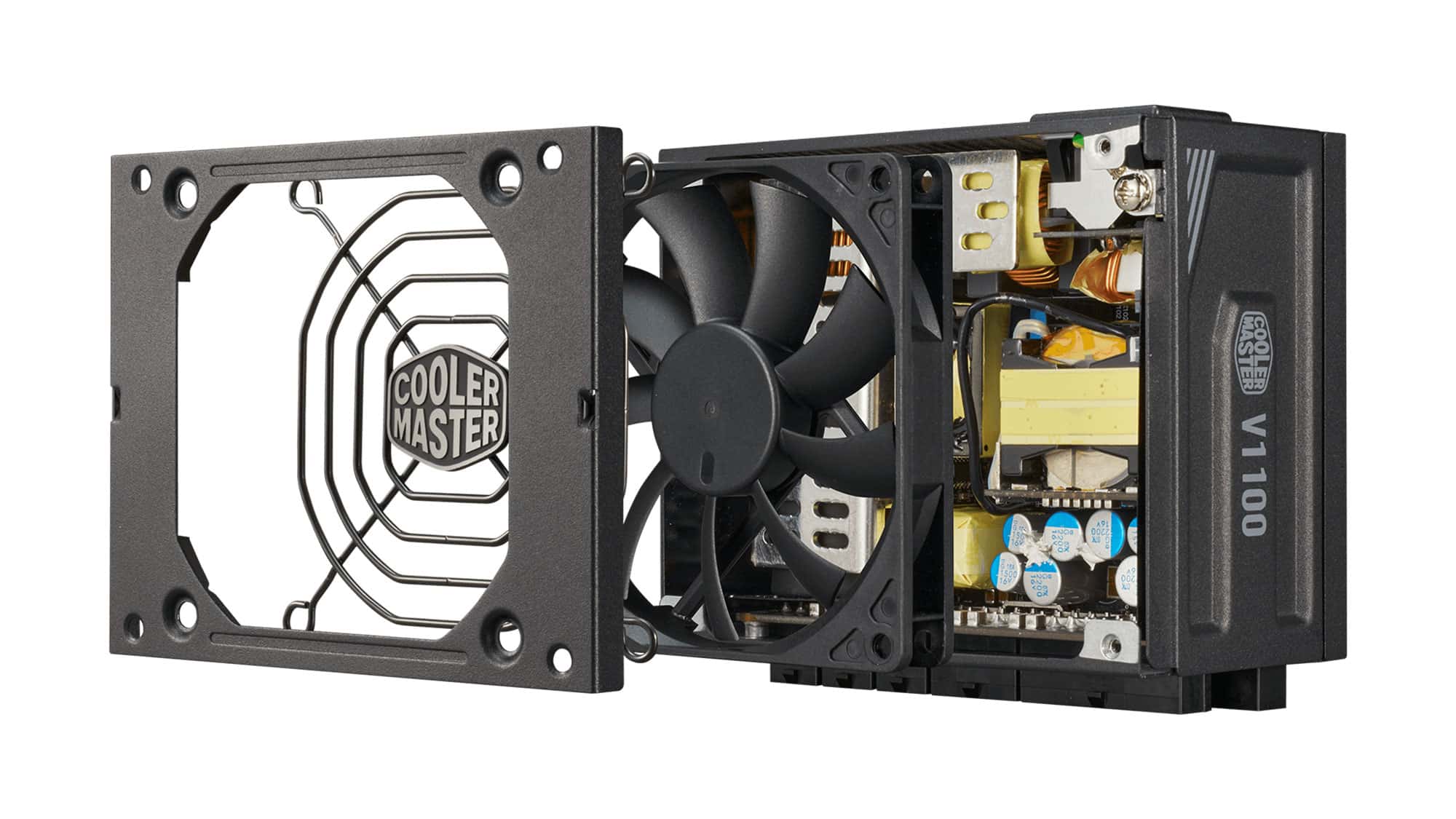
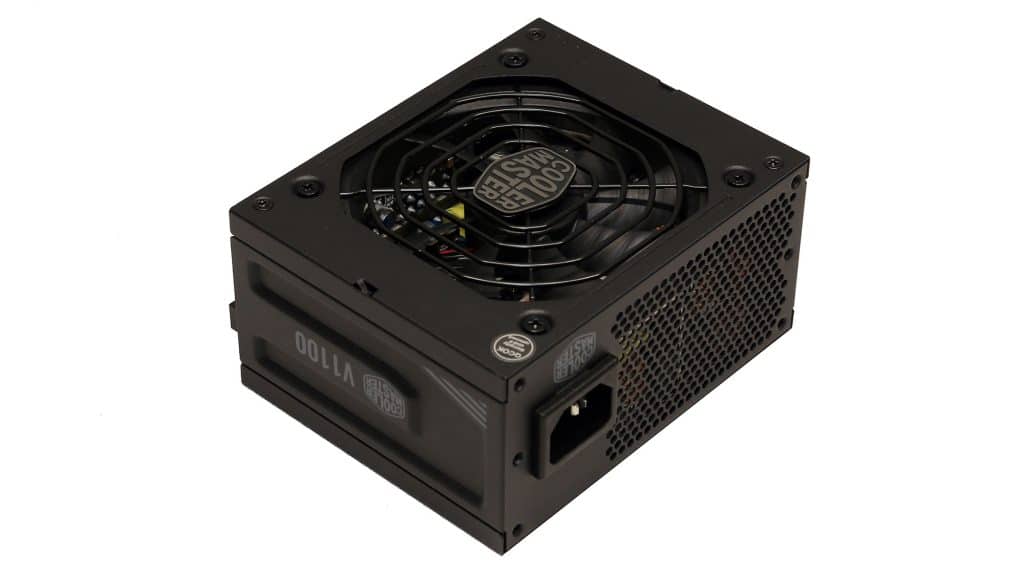
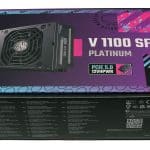
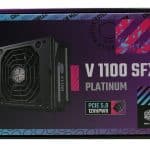

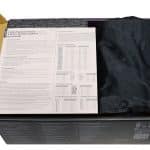
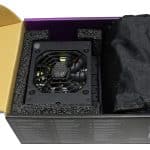
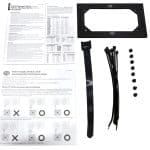

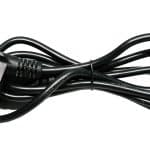
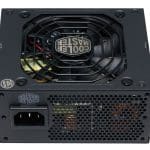
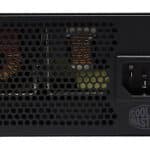
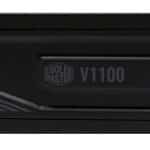

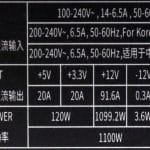
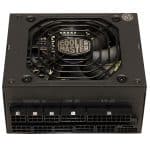

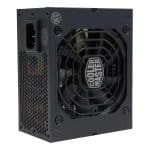
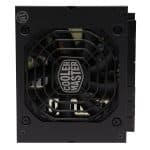
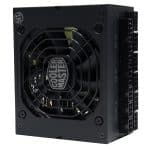

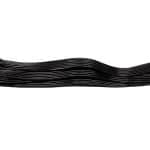

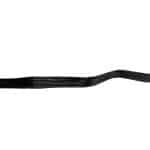
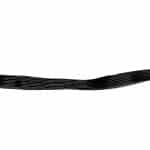
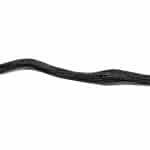

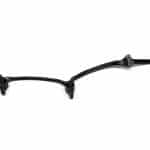
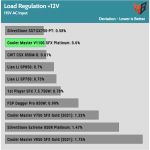
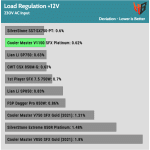
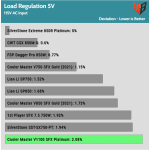
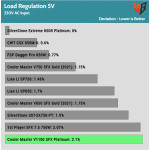
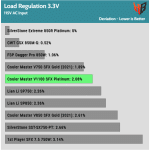
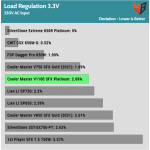
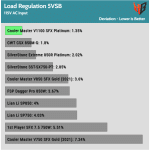
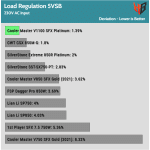
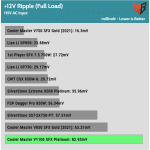
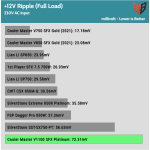
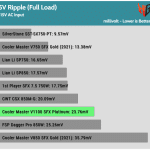
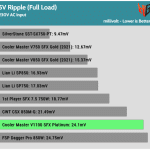
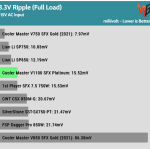
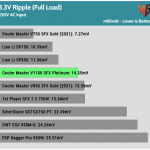
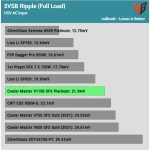
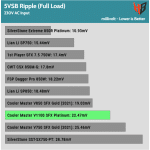

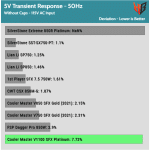
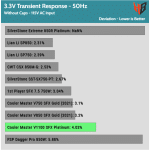

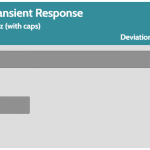
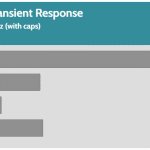
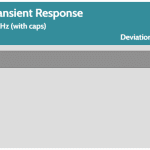
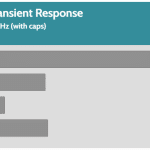
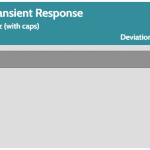
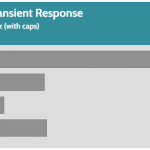
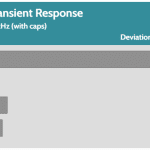
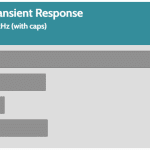
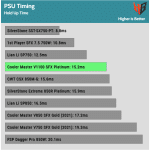
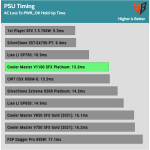

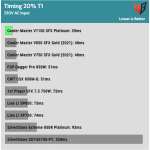

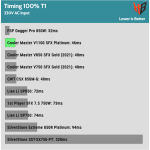
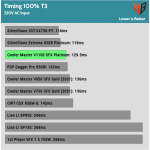
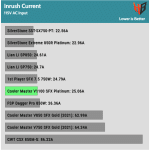

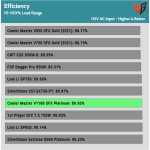
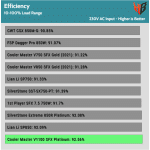

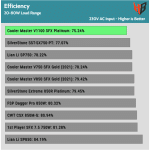
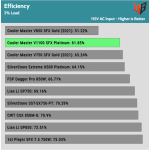
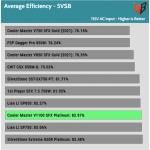



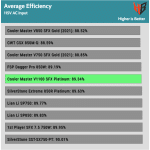
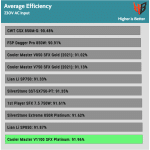
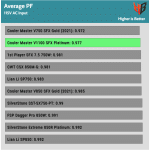
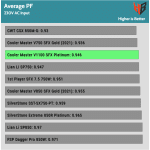
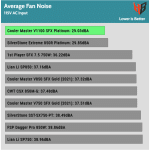
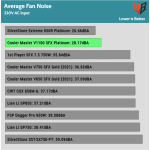

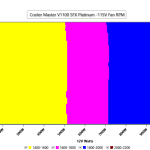
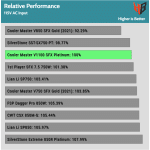
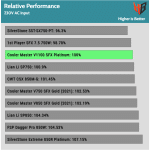
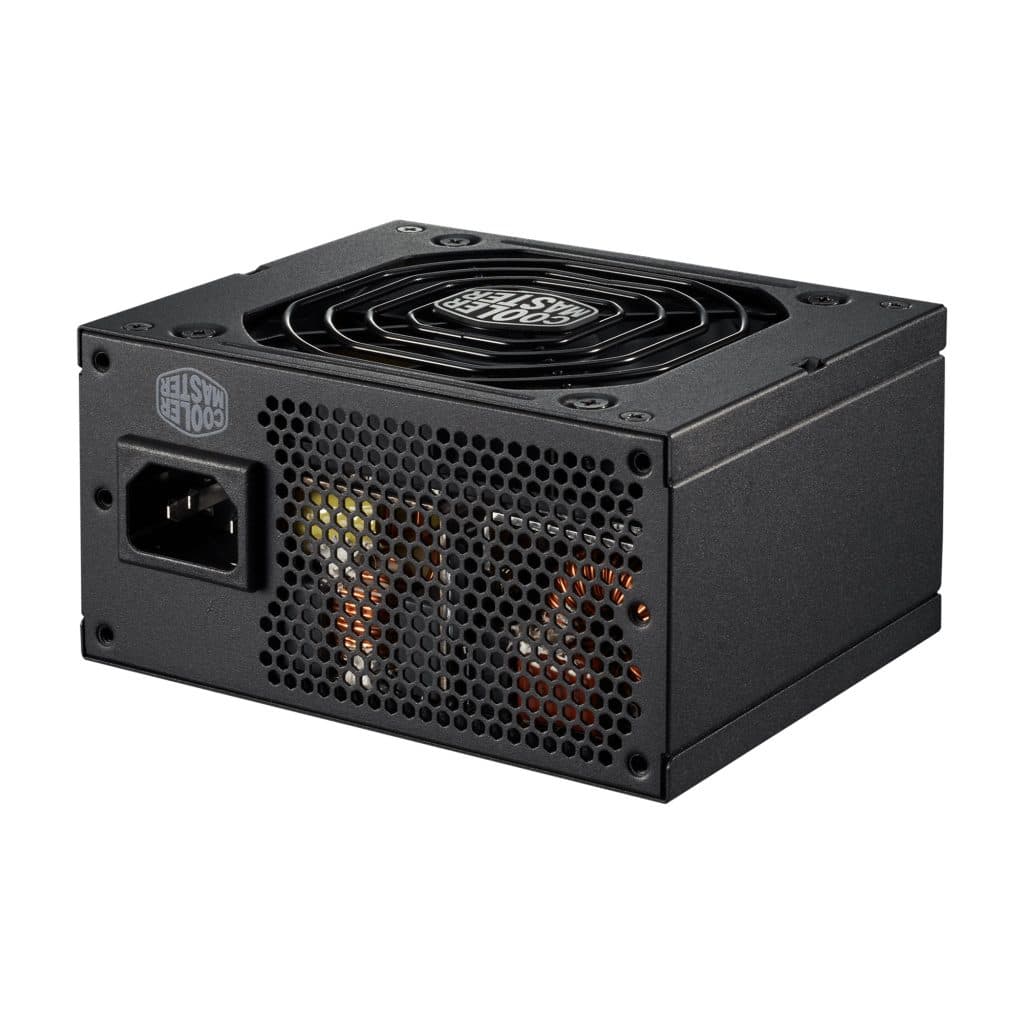
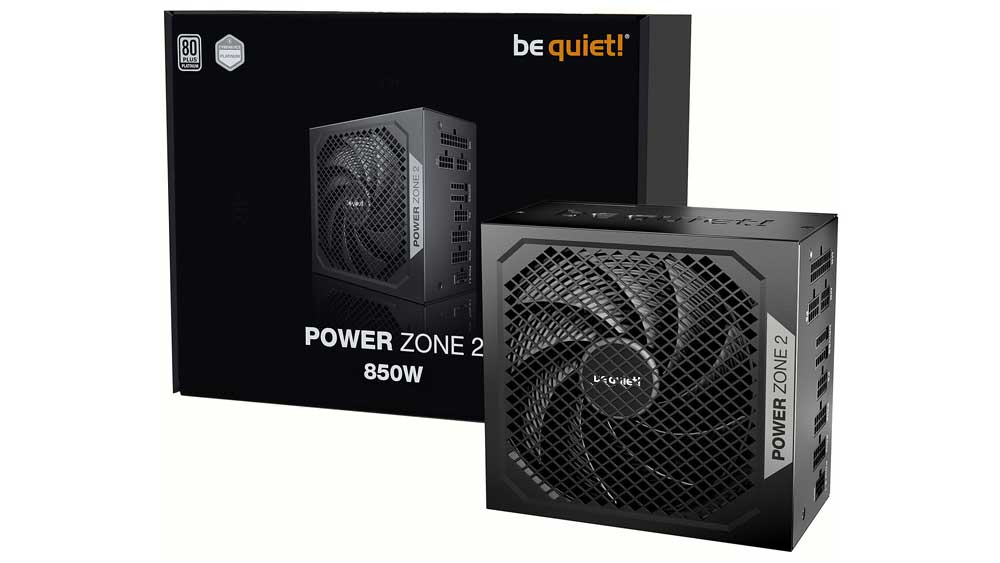

Hola le escribo porque recientemente adquirí una de esta fuentes en concreto la “Cooler Master V1100 SFX Platinum 1100W” pero tenia un problema de que se escuchaba un pequeño ruido eléctrico [shssss] en la fuente incluso cuando el ordenador estaba apagado. Devolví la fuente y me enviaron otra pero presenta el mismo problema ¿Ha tenido algún problema con los modelos que ha probado? ¿Puede ser este un fallo habitual en este tipo de fuentes?
This is coil whine and unfortunately has to do with other factors also, besides the PSU. The rest parts on your PC, and mains grid etc.
Hi, I’m wondering what your opinion is on the ripple issue? Is this something that should be of great concern for a person looking to do a high end build with a 4090 and high-end CPU? From your chart it looks like the ripple only really gets unusually high at 90-100% load. With the CPU being such high capacity, it would seem to me that the unit would be spending most of it’s time in the 50-80% range, where the ripple seems less worrisome. Would that be an accurate understanding? I’m just trying to get a sense of if this unit should be automatically written off, as some internet posters are suggesting, because of the full load ripple of 82mv.
high ripple at full load usually is not a problem, especially for high capacity PSUs.
Thanks for the review. I have been waiting for this PSU to hit the market for quite some time now. Also IIRC the 1300w version is SFX-L instead of SFX? Do you have any information on that one?
In its specs, it says SFX 12V Ver. 3.42 (which is wrong because SFX v4.0 is what PCIe 5.0 ready PSUs follow). From the photos it is SFX. More on its upcoming review.
awesome and great timing! I ve been looking for information about this new sfx. I hope you would do the review for 1300w version
Wow, this is a very in depth breakdown of this PSU, thank you for taking the time to review this so thoroughly.
I have been following this PSU for some time as I plan to use it in a new SFF build I am putting together. Do you have any information on when this will actually be hitting the market? I’m assuming you gained access to a model for review purposes?
Any light you can shed would be appreciated, thanks!